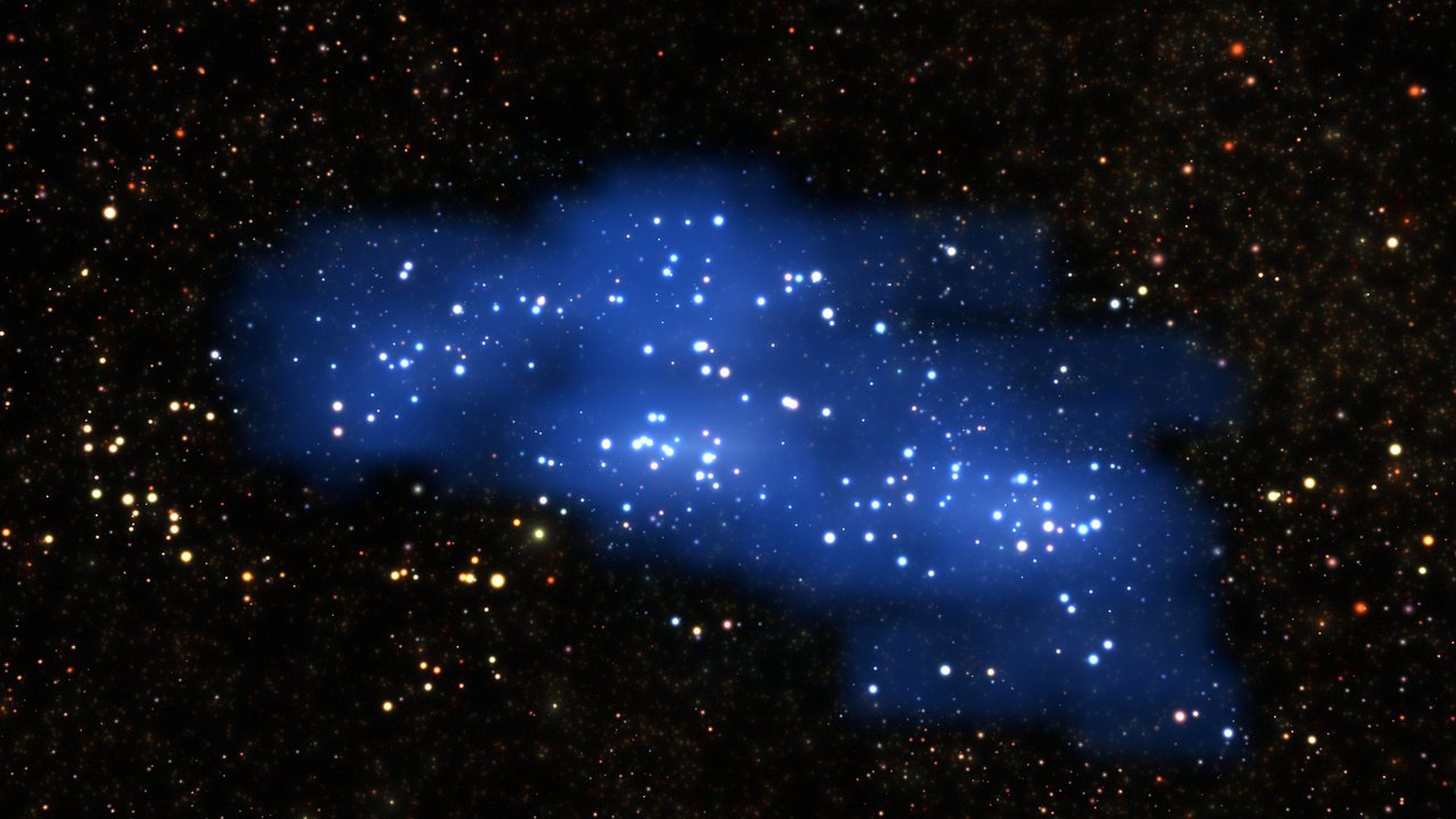
It's an object called a supercluster, which is not as foreign as it may sound. We reside in a supercluster, too. If space seems like a lonely place on dim nights, just remember that Earth is in the midst of plentiful galactic company. The sun's home, the Milky Way, is one galaxy out of many in its cosmic neighborhood. And the Milky Way galaxy is a member of a gathering of nearby galaxies called the Virgo supercluster, which is part of a larger supercluster called Laniakea (which translates to "immeasurable heavens" in Hawaiian).
These structures are typically found when scientists look at lower redshifts. In general, redshifts are a measure of how much an object's light has been stretched out as the object moves away from us. Astronomers use redshift to evaluate how long ago light left its source; because the universe is expanding, the less redshift that light shows, the later in the universe's history the light originally left its source.
Structures spotted at lower redshifts are cosmic contemporaries. But at higher redshifts, an object is determined to be much older.
An astronomical team led by Olga Cucciati from the National Institute of Astrophysics (INAF) in Bologna, Italy, found a massive supercluster from the early universe. This proto-supercluster, which Cucciati's team named "Hyperion," is "the largest and most massive structure yet found at such a remote time and distance - merely 2 billion years after the Big Bang," according to a statement published today (Oct. 17) by the European Southern Observatory (ESO).

This visible-light, wide-field image of the region around the COSMOS field was created from photographs taken through red and blue filters and are part of the Digitized Sky Survey 2. It's within this field (the blue box) that the proto-supercluster "Hyperion" was uncovered.
The team found that Hyperion has an enormous mass of 1 million billion times that of Earth's sun.
"This is the first time that such a large structure has been identified at such a high redshift, just over 2 billion years after the Big Bang," Cucciati said in the statement. "Normally, these kinds of structures are known at lower redshifts, which means [they come from a time] when the universe has had much more time to evolve and construct such huge things. It was a surprise to see something this evolved when the universe was relatively young!"
Hyperion is located in the constellation Sextans (the sextant).
A paper detailing the study was published in the journal Astronomy & Astrophysics in September.
Follow Doris Elin Salazar on Twitter@salazar_elin. Follow us @Spacedotcom, Facebook and Google+.



Comment: Discoveries that throw into question mainstream science's understanding of the universe are coming thick and fast these days: